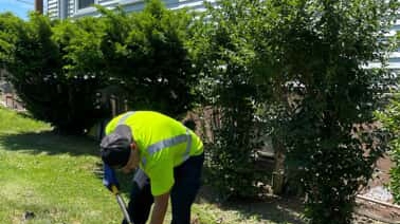Your septic tank just got pumped and you feel some weight lifted off your shoulder. Now you are wondering what the next step is. Do you need to add something to your tank to rebuild the bacteria? Should you be flushing the toilet more often? The short answer is no. Your system is ready to get back to work right after pumping! However, if you want to make sure your septic system is off to a great new start, we have the inside scoop on what to do after your septic tank pumping.
Tank Function Post-Pump
After pumping, you can expect your septic tank to function normally or even better than before. During a septic pumping, floating solids and sludge are removed from your tank. After this is removed, your tank should work more efficiently, and you shouldn’t be noticing any gurgling from fixtures that you may have before. Toilets should be flushing and drains should be working at a faster pace.
I Just Had My Septic Tank Pumped and It's Full Again!
This may come as a surprise to many, but after septic tank pumping, you can expect your tank to be full again after a few days of normal use. While septic pumping removes solids and sludge from your tank, it’ll fill with water 8 to 12 inches from the lid of your tank within just a few days. This is normal! Water is necessary for your tank to operate so, if you notice your tank looking “full” again, this is nothing to worry about. Unless you notice excess water in the leach field or water levels surpassing the outlet pipe, your system is operating as expected!
What to Do After Septic Tank is Pumped
If you are still looking for proactive ways to get your septic off to a great start after pumping, there are a few things you can do:
- First, note the date of your pumping and stick to a schedule of getting a septic pumping every 2 to 3 years.
- Throughout that time in between pumps, be sure to only flush human waste and toilet paper. Make sure all residents in your household know that flushing diapers, “flushable” wipes, and cotton balls are not acceptable.
- Also, take note of what is going down your drains. Avoid pouring grease down drains and overusing garbage disposals.
- Finally, be sure to keep water usage to a reasonable level. Extra long showers and leaving water running can overflush your system with water.
Not following these tips can lead to a need for more frequent pumping or even costly repairs. Check out more of our handy care and maintenance tips here.
Additional Septic FAQs
How long does it take to pump a septic tank?
The time it takes to pump a septic tank typically ranges from 20 to 60 minutes. This depends on the tank's size and the amount of sludge to be removed. However, the entire process, including preparation and cleanup, can take longer.
How long does it take for a septic tank to fill up?
The time it takes for a septic tank to fill up depends on several factors, including the tank's size, the number of people living in the household, and water usage. Typically, a septic tank can fill up in 2-5 years, but it's crucial to get it pumped every 3-5 years to prevent issues.
Should I fill my septic tank with water after pumping?
No, you should not intentionally fill your septic tank with water after pumping. The tank will naturally fill up with wastewater from your household over time. Adding extra water isn't necessary and could potentially disrupt the system's balance.
Need Help with Your Septic System?
Regular septic tank pumping is a great way to ensure the health and longevity of your septic. Try to avoid overthinking and taking additional unnecessary steps to get your system restarted. Your system is prepared to get back to work all on its own. However, if you do notice anything out of the ordinary with your system after a pump, contact us. One of our expert technicians will evaluate and identify any potential issues for you.
Don’t delay. Schedule your pump today!




.2504171222540.png)

